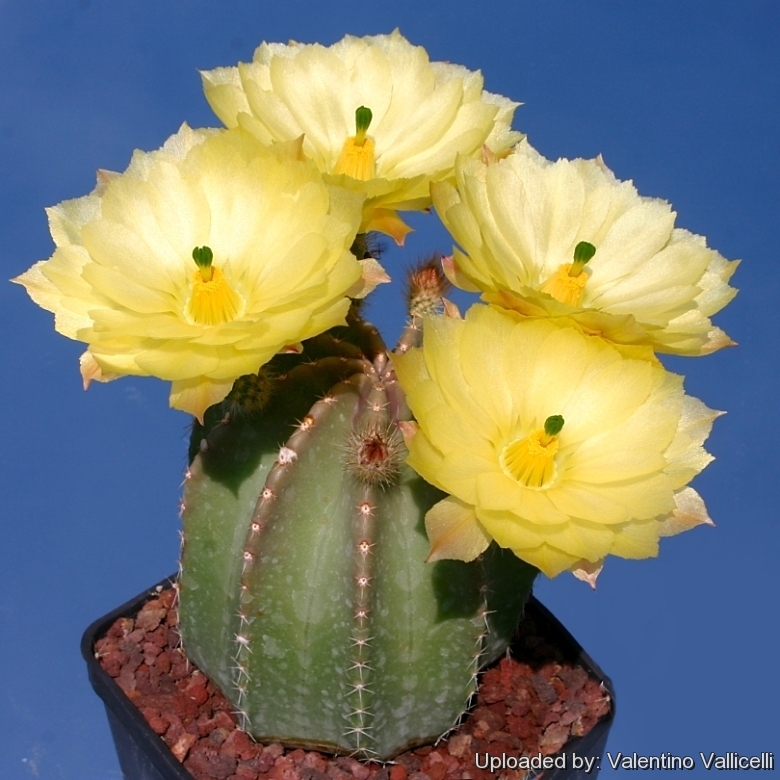
Echinocereus subinermis Photo by: Valentino Vallicelli
This species is easy to recognize, it has a dark bluish-green body
with small spines and the flowers are large yellow with green stigmas.
Origin and Habitat: Northern Mexico (southern Sonora, western Chihuahua, northern Sinaloa)
Altitude: 200-1300 meters above sea level.
Habitat: It grows in wood clearings and rocky slopes in tropical deciduous oak forests on loamy-sandy soil and igneous rocks along with Mammillaria sonorensisSN|9424]]SN|15981]], Mammillaria gueldemannianaSN|20792]]SN|8836]], Mammillaria marksianaSN|8836]]SN|20792]], Mammillaria floresiiSN|15981]]SN|9424]], Echinocereus scheeriSN|8657]]SN|8657]],Ferocactus schwarziiSN|1694]]SN|14457]], Ferocactus alamosanusSN|14457]]SN|1694]], Opuntia decumbens, Pachycereus pecten-aboriginumSN|8498]]SN|8498]], Bursera laxiflora, Sabal mexicana, Agave vilmoriana, Agave bovicornutaSN|308]]SN|308]] and Agave guadalajarana.
Synonyms:
See all synonyms of Echinocereus subinermis
Description: Echinocereus subinermisSN|16544]]SN|16544]] is the least armed species of the genus with very short spines and huge yellow blooms.
Habit: At first simple or slowly clumping.
Stem: When young pale green, afterwards bluish green and finally darker green and more or less purplish, 10-20 cm tall, 7 to 9 cm in diameter.
Ribs: 5-11 with narrow furrows between them, broad somewhat sinuate, rounded.
Areoles: Small, slightly woolly, 10-12 mm apart.
Central spines: Usually absent or one (1 to 4 in var. ochoterenae) very short and inconspicuous to up to 2 cm long, thin and porrect.
Spines: Younger plants have short spines while older ones are almost spineless.
Radial spines: 0 to 10 (usually 3 to 8), widely spreading, small, unequal, conic, yellowish, or creamy with a darker tip, deciduous, 1 to 8 mm long (or more).
Flowers: Large and showy up to 10-12 cm in diameter near the stem tips and from second to third areoles on the ribs, perianth segments oblanceolate, acute, cream to bright-yellow delicately sweet-scented, often with some reddish midstripes. Stigma with 10-12 green lobes. Filaments light yellow. Spines of areoles on ovary and flower-tube short, white to brown with scarce white wool.
Blooming season: Spring and summer. The individual flowers will last up to six days. Blooming generally begins 4 to 5 years after sowing, as the plant matures.
Fruit: Obovoid, spiny, grey-green with white pulp, deciduous by a longitudinal slit.
Subspecies, varieties, forms and cultivars of plants belonging to the Echinocereus subinermis group
 Echinocereus subinermis Salm-Dyck in Seem. ex Scheer: with usually solitary stems (or with very few branches) often spineless with 5-9 ribs. the floral tube is only slightly woolly (from northern Sinaloa, southern Sonora, south-western Chihuahua)
Echinocereus subinermis Salm-Dyck in Seem. ex Scheer: with usually solitary stems (or with very few branches) often spineless with 5-9 ribs. the floral tube is only slightly woolly (from northern Sinaloa, southern Sonora, south-western Chihuahua) Echinocereus subinermis var. luteus (Britton & Rose) F.M.Knuth: from Sonora and Sinaloa, is generally solitary, has 8 or 9 ribs, no central spine, 6 to 8 radials, up to 8 mm long.
Echinocereus subinermis var. luteus (Britton & Rose) F.M.Knuth: from Sonora and Sinaloa, is generally solitary, has 8 or 9 ribs, no central spine, 6 to 8 radials, up to 8 mm long. Echinocereus subinermis subs. ochoterenae (J.G.Ortega) N.P.Taylor: With branched stems, always spiny with 8 to 11 ribs. the flower tube is noticeably woolly (From northern Sinaloa).
Echinocereus subinermis subs. ochoterenae (J.G.Ortega) N.P.Taylor: With branched stems, always spiny with 8 to 11 ribs. the flower tube is noticeably woolly (From northern Sinaloa). Echinocereus subinermis cv. Spiral: has spiral schaped ribs.
Echinocereus subinermis cv. Spiral: has spiral schaped ribs.
Bibliography: Major references and further lectures
1) Edward Anderson “The Cactus family” Timber Press, Incorporated, 2001
2) Nathaniel Lord Britton, Joseph Nelson Rose “Cactaceae: Descriptions and Illustrations of Plants of the Cactus Family” vol. 4 The Carnegie Institution of Washington, Washington 1923
3) James Cullen, Sabina G. Knees, H. Suzanne Cubey "The European Garden Flora Flowering Plants: A Manual for the Identification of Plants Cultivated in Europe, Both Out-of-Doors and Under Glass" Cambridge University Press, 11/Aug/2011
12) David R Hunt; Nigel P Taylor; Graham Charles; International Cactaceae Systematics Group. "The New Cactus Lexicon" dh books, 2006
13) Hernández, H.M., Gómez-Hinostrosa, C. & León de la Luz, J.L. 2013. Echinocereus subinermis. In: IUCN 2013. "IUCN Red List of Threatened Species." Version 2013.1. <www.iucnredlist.org>. Downloaded on 24 October 2013.
14) Flora of North America Editorial Committee “Flora of North America: North of Mexico. Magnoliophyta: Caryophyllidae, part 1” Oxford University Press, 1993
15) Karl Schumann “Blühende Kakteen. Iconographia Cactacearum.” Im Auftrage Der Deutschen Kakteen-Gesellschaft Herausgegeben Von Prof. Dr. Karl Schumann (Prof. Dr. Max Gürke, Dr. F. Vaupel). 1900
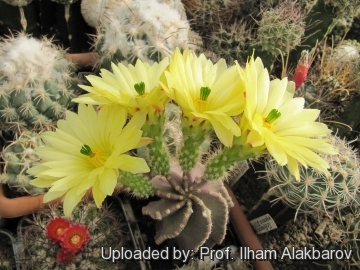 Echinocereus subinermis Photo by: Prof. Ilham Alakbarov
Echinocereus subinermis Photo by: Prof. Ilham Alakbarov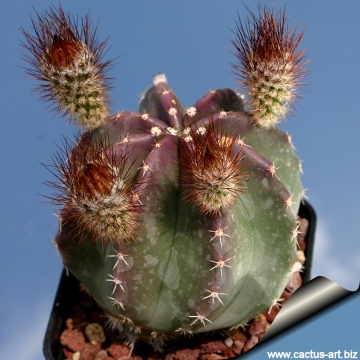 Echinocereus subinermis Photo by: Cactus Art
Echinocereus subinermis Photo by: Cactus Art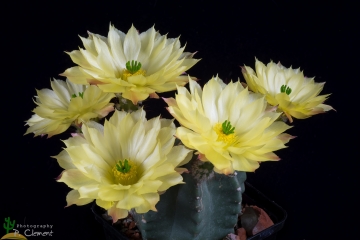 Echinocereus subinermis Photo by: Peiffer Clement
Echinocereus subinermis Photo by: Peiffer Clement Echinocereus subinermis Photo by: Cactus Art
Echinocereus subinermis Photo by: Cactus Art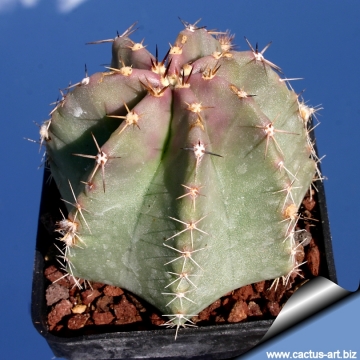 Echinocereus subinermis Photo by: Cactus Art
Echinocereus subinermis Photo by: Cactus Art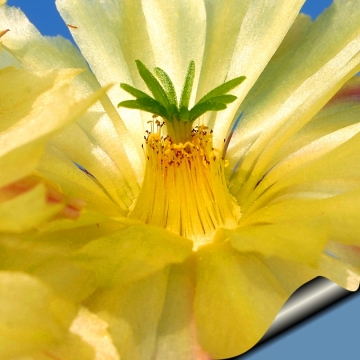 Echinocereus subinermis Photo by: Cactus Art
Echinocereus subinermis Photo by: Cactus Art Echinocereus subinermis Photo by: Cactus Art
Echinocereus subinermis Photo by: Cactus Art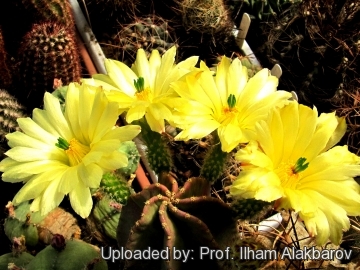 Echinocereus subinermis Photo by: Prof. Ilham Alakbarov
Echinocereus subinermis Photo by: Prof. Ilham AlakbarovCultivation and Propagation: This cactus is cultivated and highly priced for its flowers. It is among the easiest species to grow, flower and propagate.
Waterings: Water regularly from March to October. Rot prone in winter, it needs good drainage.
Hardiness: It can not tolerate much frost. Frost Tolerance: Hardy to -2° C.
Exposition: It does not like full harsh sun as it seems to have a delicate skin and few spines, so give it a protected position in the partial-shade or under filtered sun.
Propagation: Seeds (usually), it also can be grown from cuttings, as it can branch from the base.
Your Photos
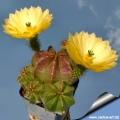
by Cactus Art
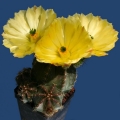
by Valentino Vallicelli
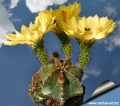
by Cactus Art






















